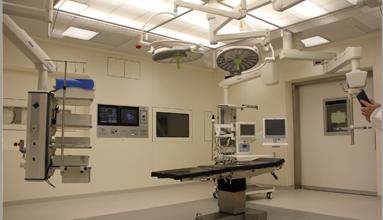The quality and speed of these complex medical translation projects speak volumes about the skills of the Ulatus team.

Our client is an award-winning international medical and science publisher serving health professionals and students for more than 125 years. It has more than 900 employees worldwide, and offices in several cities across the globe. In addition to publishing more than 70 new book titles every year, it publishes more than 140 medical and scientific journals both in traditional print and electronic format.
The client was looking for a language services provider that is flexible and open to discussion and improvements. In addition, it wanted complete accuracy in translating its medical science books with a cost-effective pricing model and ensuring that little to no revisions are needed post-delivery.
Since the client is an international medical and science publisher, there was an expectation that we create entirely localized English / German versions of its medical books. Also, considering the technical complexity of the medical subject area, the client wanted assurance that the translation does not diverge from the source and retains the intended meaning of the book.
To meet the client requirements, we had to ensure that all the stakeholders involved in the project life cycle had to be in sync. It was an enormous challenge to bring a team of experts together to control the operations and deliver a high-quality translation.
Our client offers a wide range of medical science books on neurosurgery, otolaryngology, orthopedic surgery, ophthalmology, radiology, complementary and alternative medicine, audiology and speech, and language pathology.
It was a formidable exercise to assign a linguistic team whose translation style and expertise in various medical science domains matched the client’s requirements. We were expected to deploy a team with the right qualifications and skills to translate the books.
It was imperative to ensure that the team, and the client understood the end goal of the collaboration for seamless coordination. With this approach, we initiated a project kick-off call with the client. We identified several small goals and mapped a clear plan. It ensured that everyone on the team, and the client was on the same page from the start, which helped us keep the project moving forward and on track.
We redesigned our conventional linguist team selection process and translation workflow to provide the optimum output. We also included an additional step of substantive editing to ensure correct logical flow, structure, and presentation of the translation output. This editing service was specifically tailored to the client's needs, considering its background.
We hired experts from the medical science domain for this project. An expert translator in dentistry, pediatric, and medicine led the linguist team. The project manager briefed all the translators, explained the project's significance, and clarified the client's expectations. We assigned only the translators with book translation experience for this project.
The level of attention to detail has to be exceptional in medical translation. Even the smallest of errors could have significant consequences. So it's a high-pressured undertaking every time.
Multiple linguists were shortlisted based on their specialization in the medical science field, qualification, experience, and nativity. We carefully selected and tested every member of the translator's team. In addition, we specially designed an assessment to scrutinize the linguists' skills and expertise before assigning this project to them.
We appointed a skilled project manager responsible for coordinating with all the stakeholders involved.
We created an impeccable workflow for the client, including translation, editing, and review stages. Our QA specialists meticulously handled the numerous quality checks at every step of the process. While our QA process involves very intensive quality controls, as an additional step, we involved a bilingual medical doctor to assist us with an extra final check and sign-off process, which targeted critical areas of the document.